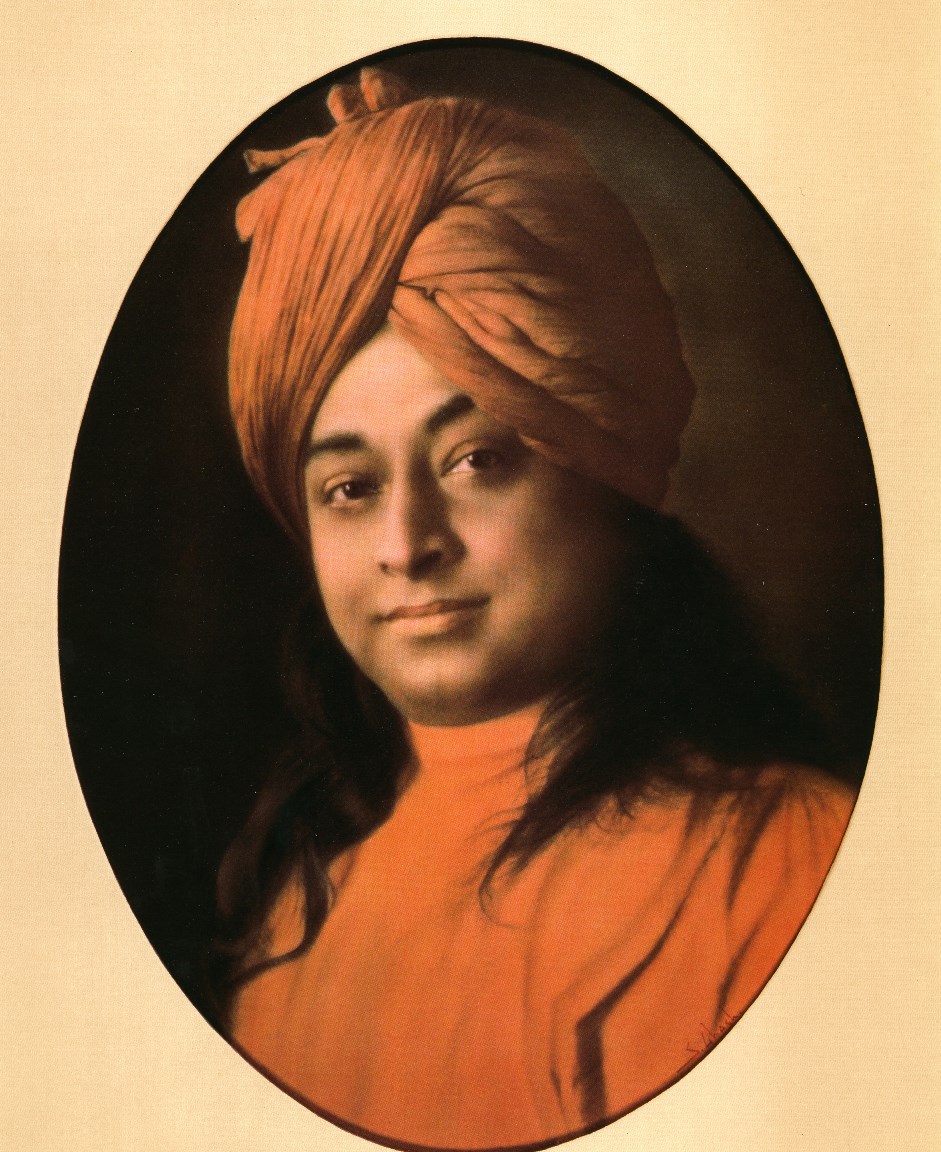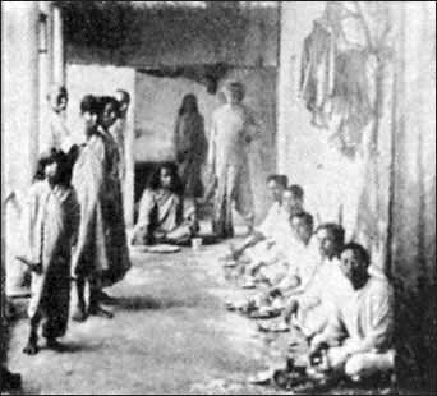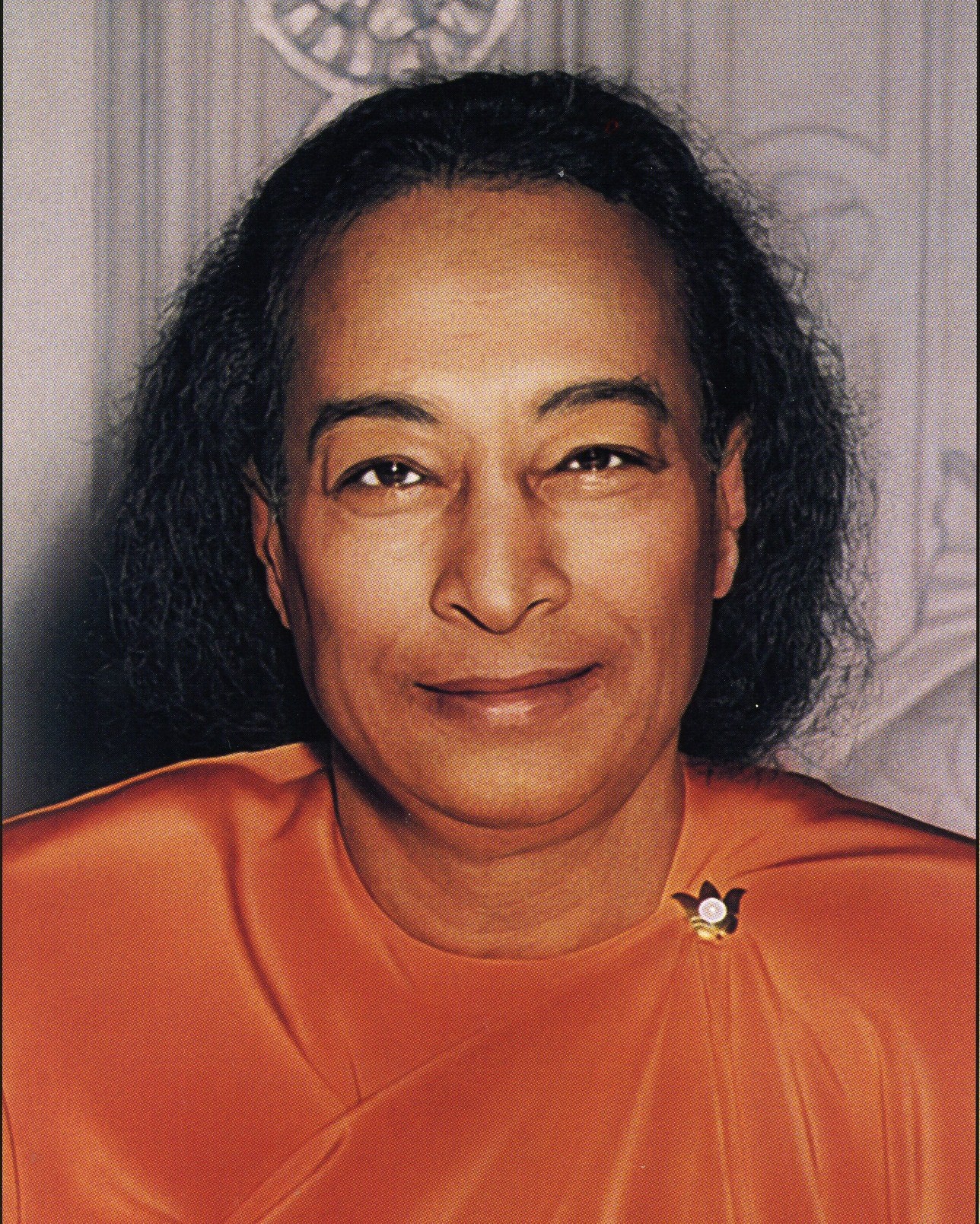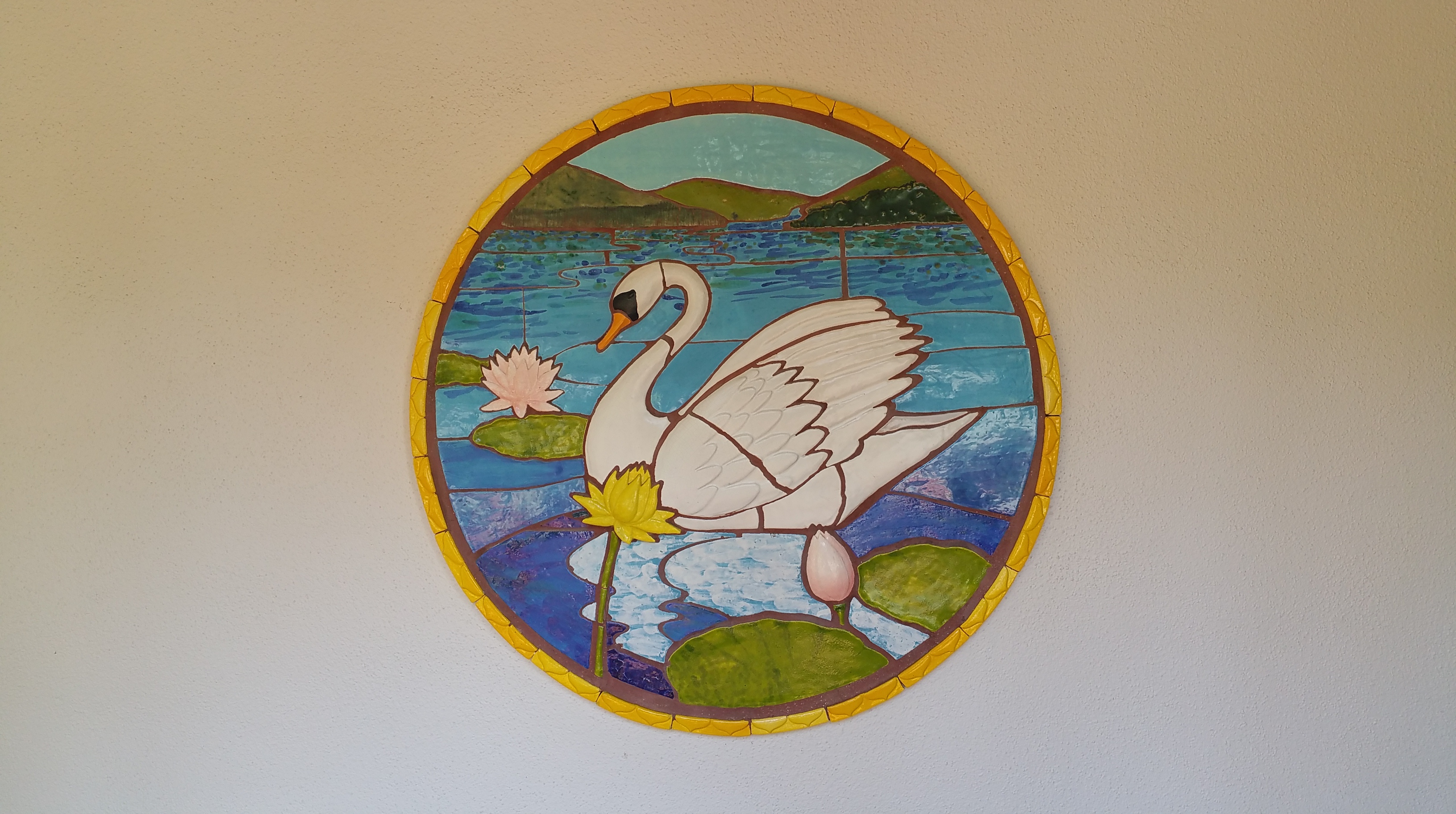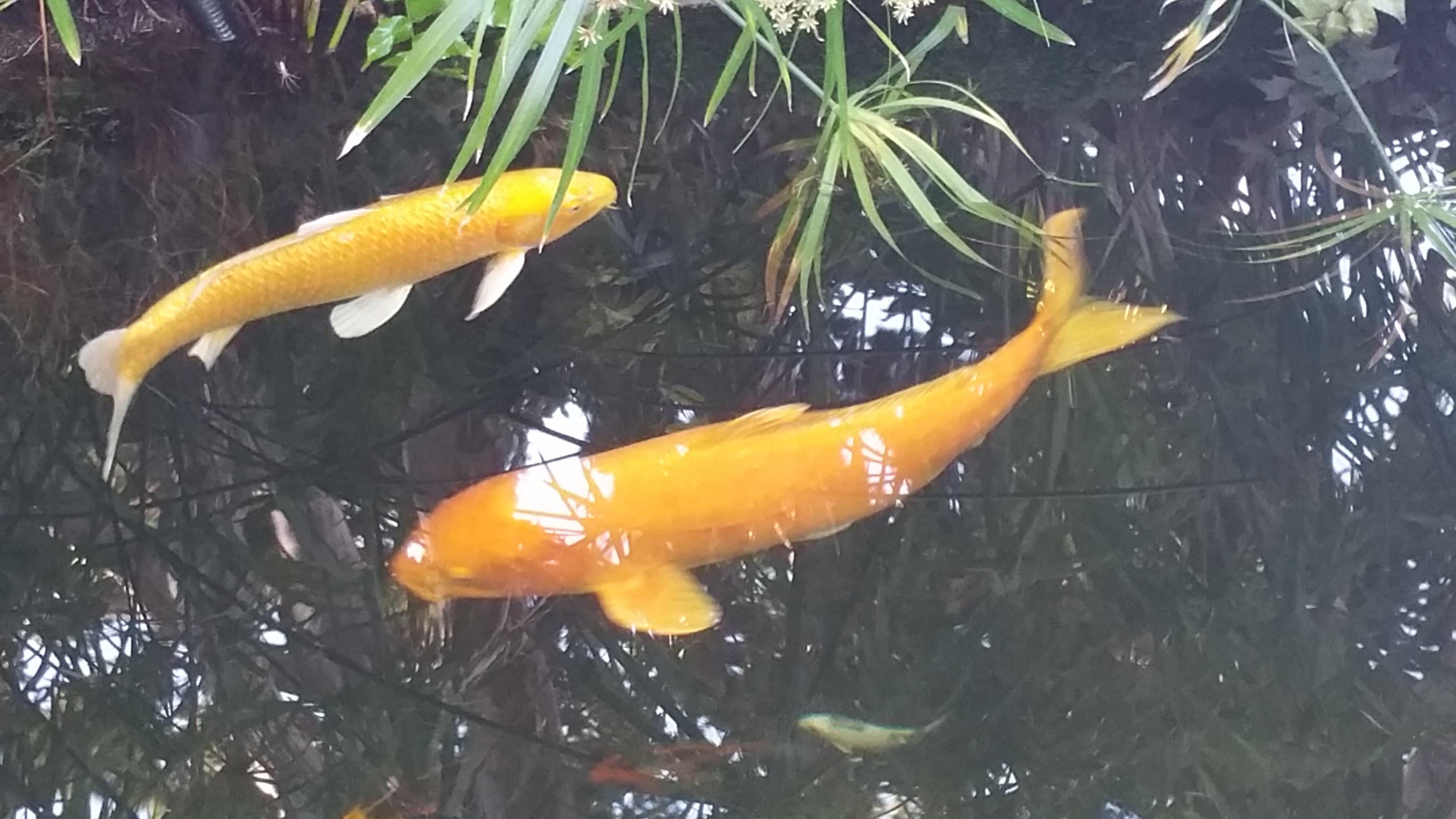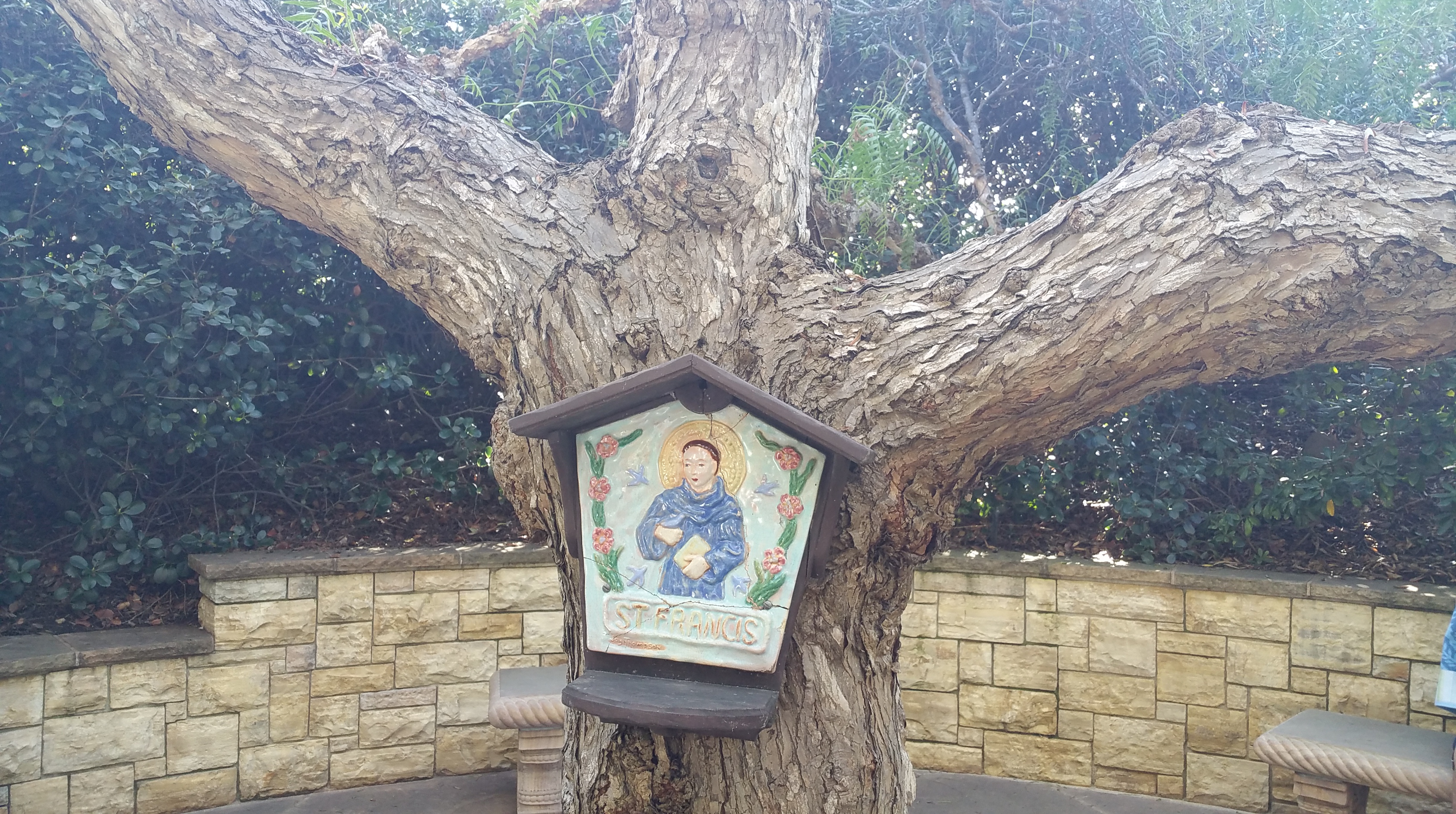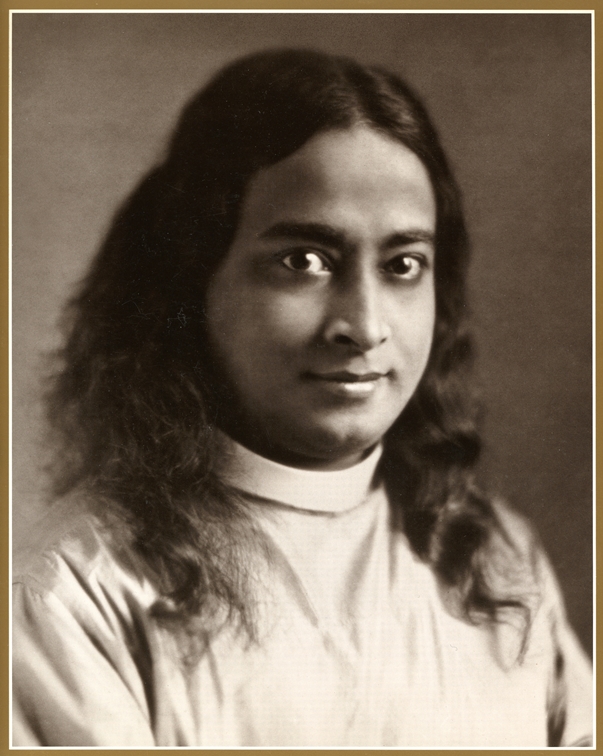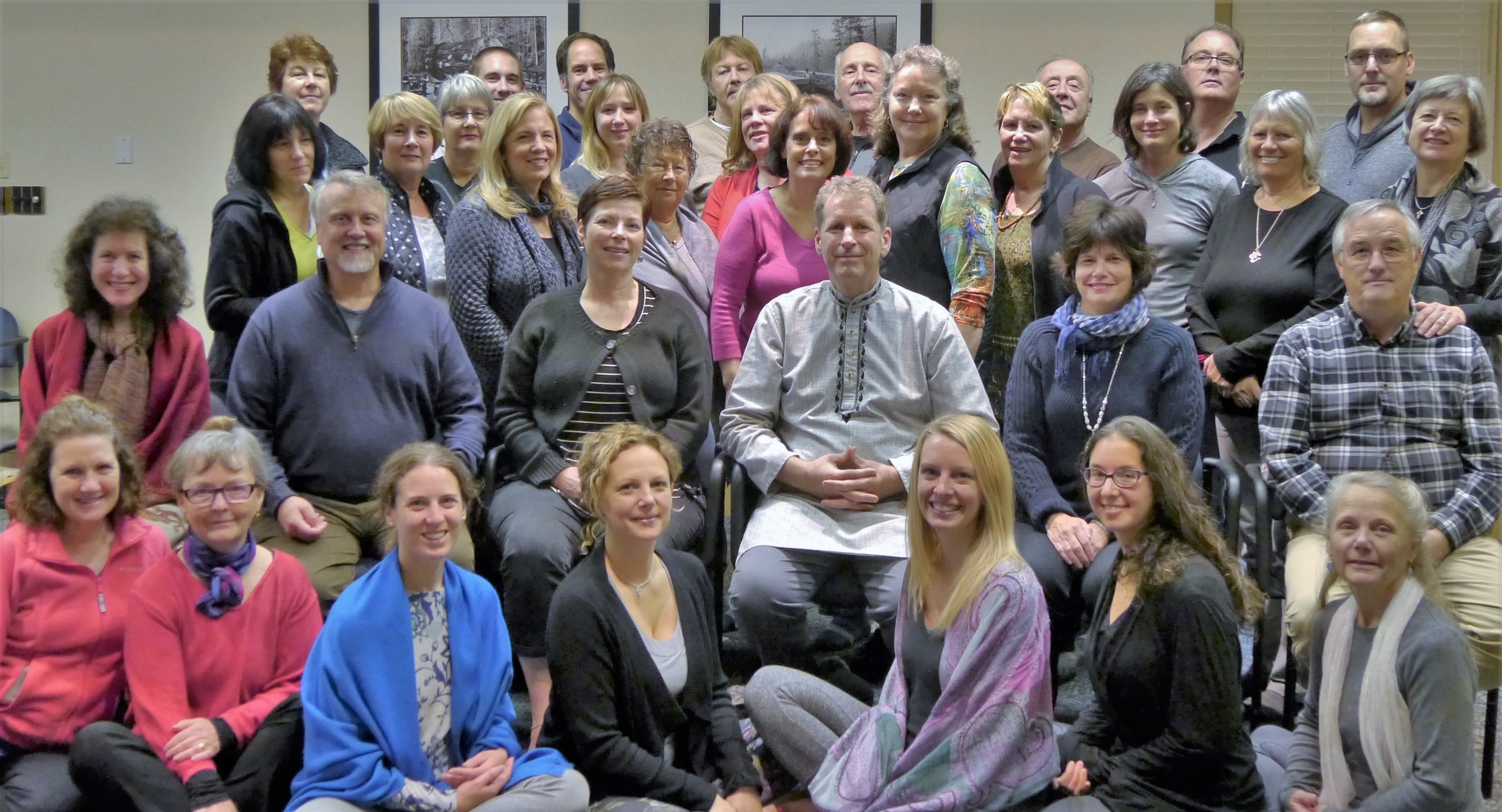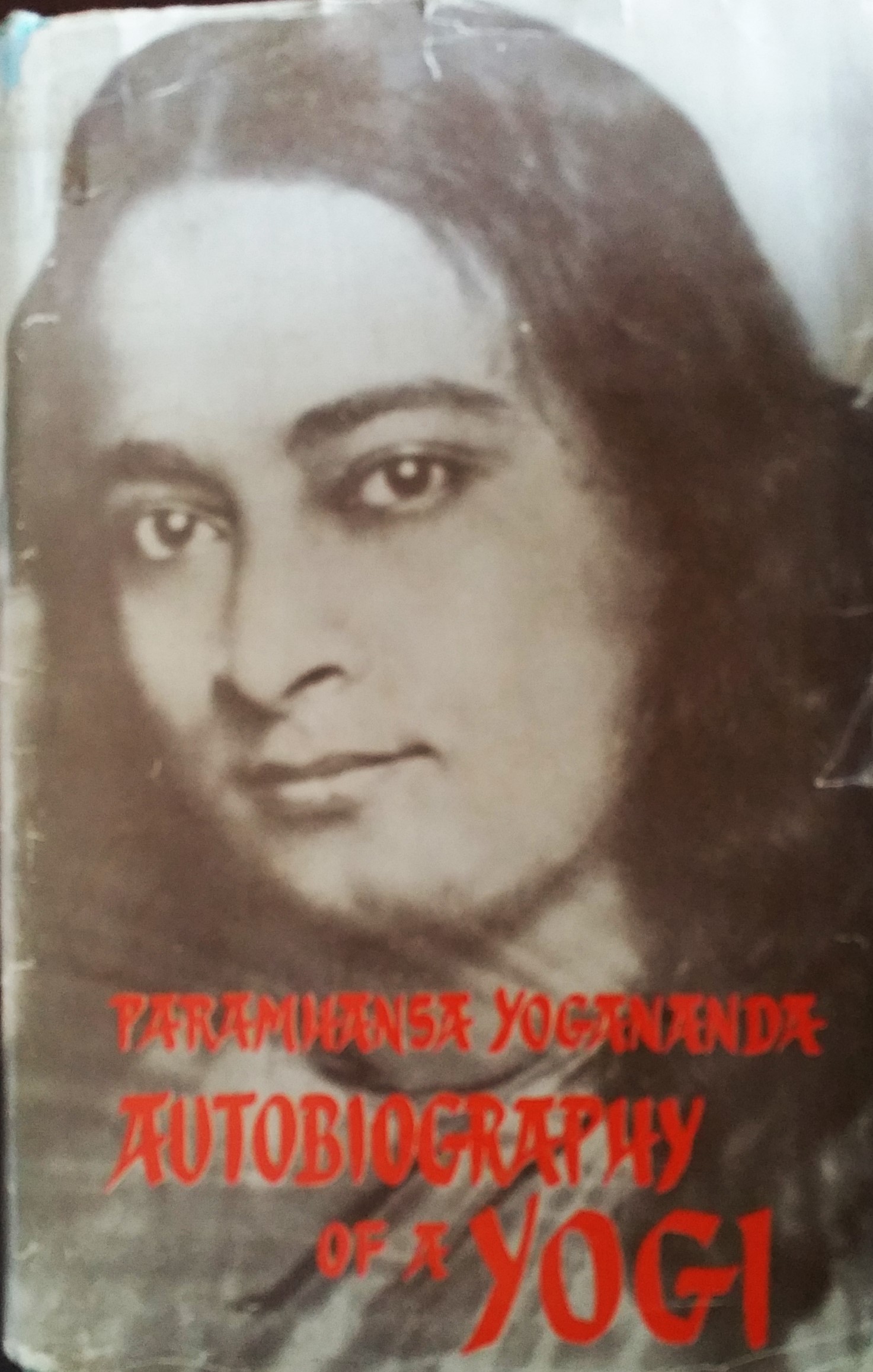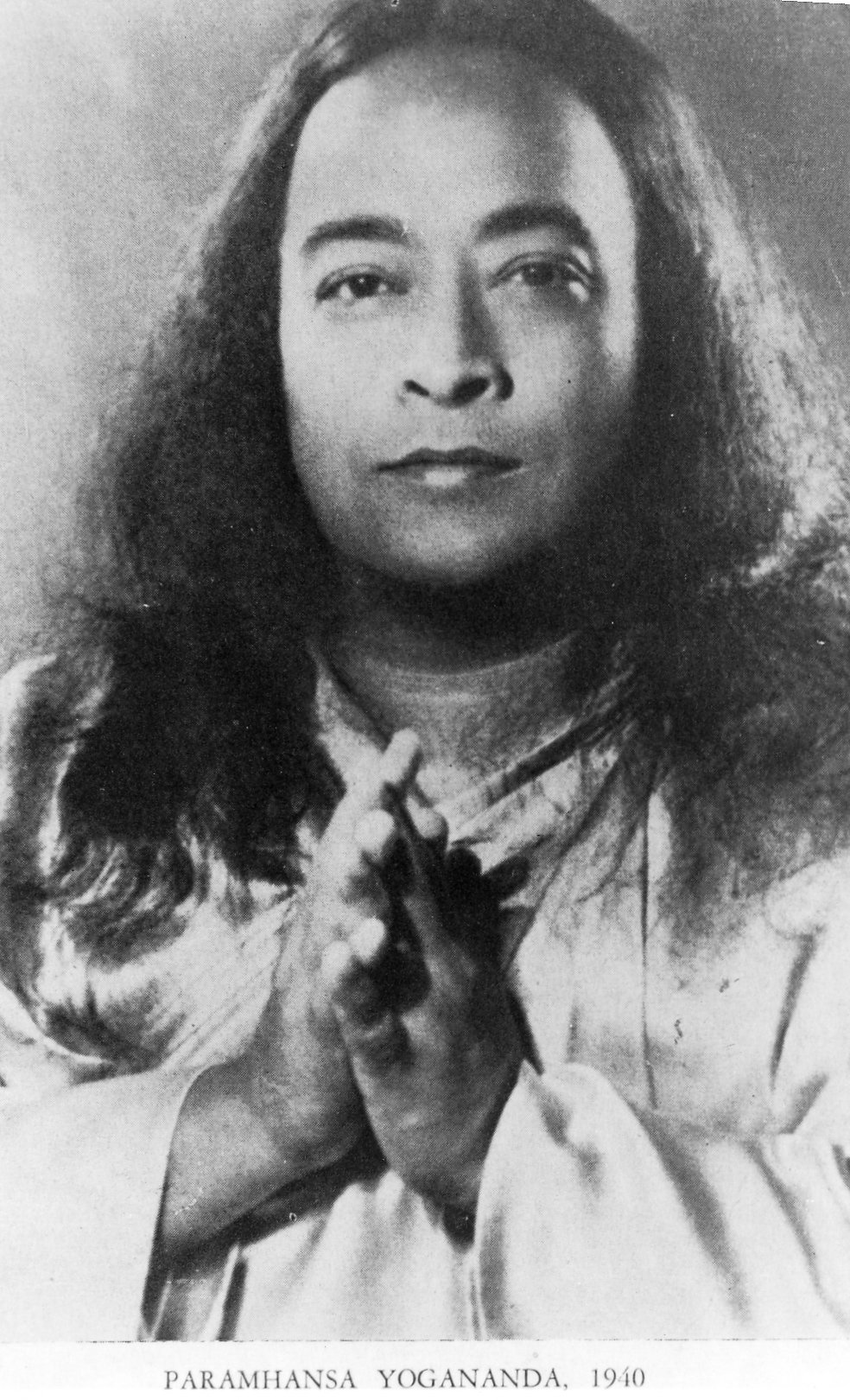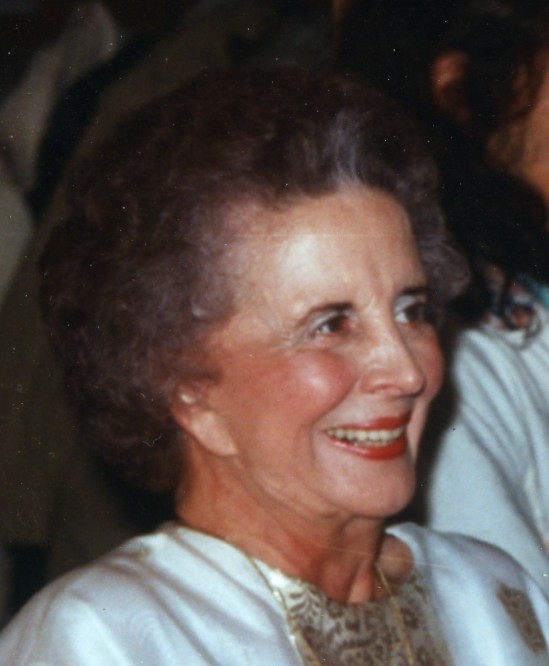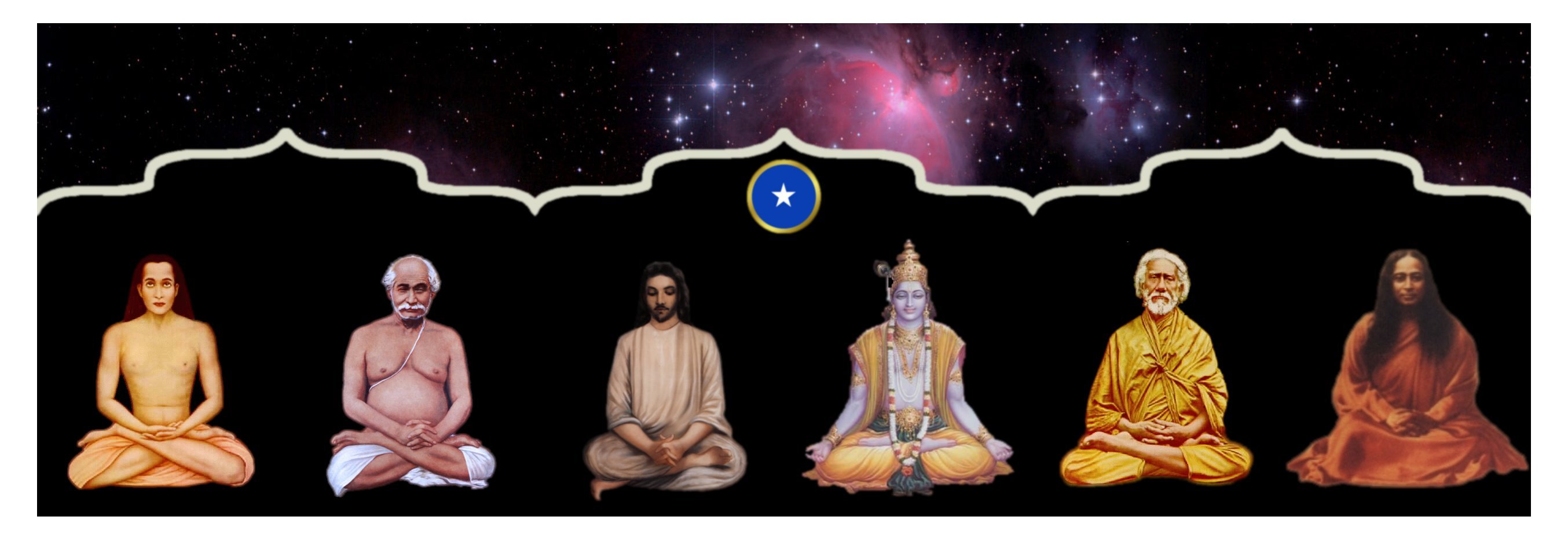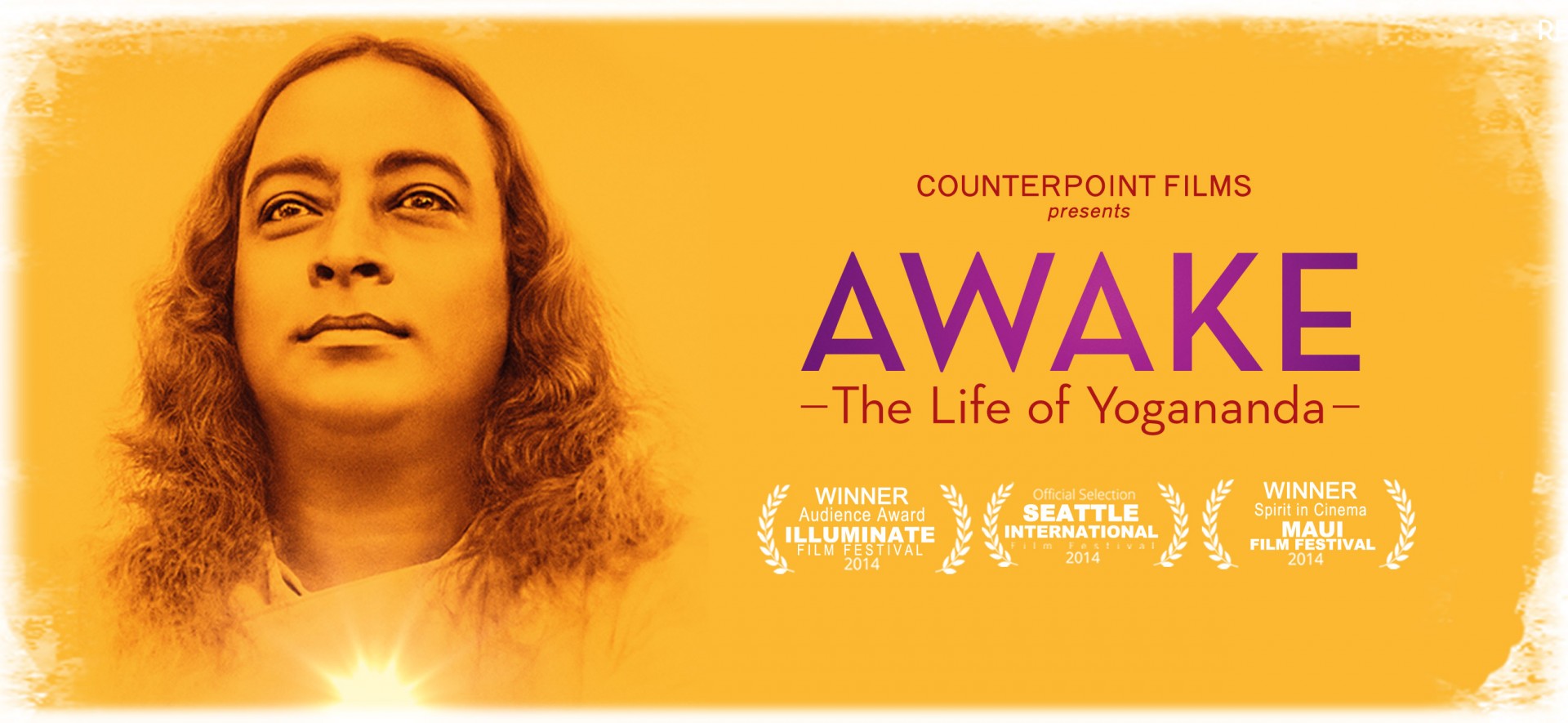Picture: Mrs. Sen pronams to Master; the last picture of his living form.

In our narrative we enter the last act, the evening of the banquet to honor the Ambassador of the “newly minted” nation of India; a fulfillment of Divine Mother’s whispered promise to Master that he would live to see the day of a free India. It has been moving and uplifting to take this journey with you of Master’s last days.
****************
The banquet at the Biltmore in 1952 was scheduled to start about 7 p.m. Shortly before that time Colonel Steinberg and Mr. Clifford Frederick (a resident disciple at the Mt. Washington Center, who had driven Master in his car to the hotel) went to Paramhansaji’s room to escort him downstairs. This trio entered the banquet hall—the Music Room of the Biltmore—a few minutes after seven o’clock. Yoganandaji was directed to his seat at the speakers’ table. On his right was Mme. Sen, a Bengali, wife of the Ambassador of India; on his left was Mrs. Sharma, an Englishwoman, wife of Dr. J.N. Sharma of Los Angeles. On this, the Last Supper of all, Master was thus symbolically placed between East and West.
About 240 guests were present, including thirty five SRF students from Los Angeles and nearby cities. Twenty persons were seated at the speakers’ table, long and comparatively narrow, which was placed on a platform that elevated the guests of honor above the floor level. The majority of the guests sat at circular tables. To accommodate those for whom no seats were available in the Music Room, additional tables were set up in an anteroom.
The Misses Fay and Virginia Wright (sisters who, with their mother Mrs. Rachel Wright, have been resident disciples at the Los Angeles headquarters for more than twenty years) were present at the banquet. They had made reservations for seats directly in front of Master’s place at the speakers’ table. Through some error their seats were given to other persons. Faye, Virginia and Sally (Miss Sahly) therefore sought out a table in the anteroom.
Yoganandaji looked at the tables in front of him and did not see the three disciples. He beckoned to Mr. Frederick, who was seated two tables away, and inquired, “Are Faye, Virginia and Sally here?” Mr. Frederick replied, “Yes, Sir,” and unobtrusively pointed them out to Master as they stood at the distant doorway of the anteroom.
“An expression of deep kindness, of very great blessing, then came over his face,” Mr. Frederick recounted later. The beloved Master, who never forgot any goodness shown him, thus remembered, by his look of farewell benediction, to thank three disciples who had long served him faithfully.
Mr. Frederick, who generally photographed Master and his guests at any SRF gathering, had been instructed by Yoganandaji not to take any pictures at the Biltmore. Probably Master had made that request because the banquet was to be given not by SRF but by the India Association of America. Unfailingly, in every situation that arose in daily life, Paramhansaji manifested an exquisite sense of propriety and courtesy.
Insignia of the handiwork of the Master Playwright may be detected in all the details in the drama of Yoganandaji’s passing. To SRF disciples it seems no accident that a commercial photographer was present at the banquet and took many beautiful pictures of the great guru during his last hours on earth.
The cameraman, Mr. Arthur Say, who also photographed Ambassador Sen and other celebrities, had never met Paramhansaji before March 7th. The young man has long been interested in India, however, and spent several years there during the war. He attended the banquet as a guest of Mr. Ram Bagai, former president of the Hollywood Foreign Correspondents’ Association. “When I received a printed invitation from the India Association,” Mr. Say later told the editor of Self Realization Magazine, “I felt a strong inclination to accept it. The young lady who had planned to accompany me decided at the last minute not to go, but I was determined to be present.” He added. “I have never regretted it when I have obeyed the urgings of the still small voice within.”
Guests at the dinner were given their choice of several courses. Master was served with fruit salad, a vegetable plate, and strawberry parfait. But he ate very little. SRF disciples who were seated at nearby tables observed that their guru scarcely touched his food. He was attentive, however, to his dinner companions, and conversed affably with Mme. Sen and Mrs. Sharma. Halfway through the meal he summoned Mr. Frederick to fetch some butter for the Ambassador’s wife.
Mrs. Sharma later stated: “Paramhansaji was very kind and thoughtful. He said to me once or twice: ‘Please excuse my talking in Bengali with Madame Sen. We are having a wonderful time chatting in our mother tongue!’ Then the three of us would talk together for a while in English.
Paramhansaji was perspiring about the face but seemed happy and composed. He was in good health, apparently, and presented no signs of being tired, faint, or in pain.”
She added, “We talked of deep things—of mankind, and philosophies, and the Infinite God. The last words Paramhansaji said to me were these: ‘Always remember: life has its beautiful roses and also its thorns; and we must accept both.’”
We may perhaps surmise from these final words to Mrs. Sharma that Yoganandaji was attempting to soften slightly the shock that the gracious lady was soon to feel at his passing.
Paramhansaji was always an ideal guest, considerate and appreciative, whether in a private home or at a public function. But then, was there any way in which Master failed to display the beauty of a life that is attuned to the Divine Will?
[A description of various speakers is deleted here. We pick up the narrative once again]
. . .Tonight at the banquet, however, Yoganandaji did not gaze about him with his usual heartwarming smile, nor did he laugh at any of the amusing anecdotes in the various speeches. He was not stern, and only occasionally grave, but an aura of strangeness surrounded him that was quickly detected by all his disciples at nearby tables.
After the talk by Mr. Ford, Dr. Saund introduced Colonel Steinberg. This great friend of Self-Realization Fellowship spoke with fervor of its influence for peace and goodwill among the nations, and referred lovingly to Master as a “spiritual giant.” He then announced that Yoganandaji would address the assemblage.
As Paramhansaji rose to go to the speaker’s stand, Mme. Sen offered him a gesture of respect by placing her hands together in a pronam. It was a true symbolic tribute. By it one feels that the wife of the Ambassador conveyed the gratitude of India to its son in the West who was a living embodiment of its ancient spiritual culture.
(A few minutes later Yoganandaji was no longer a living embodiment. Mme. Sen’s touching tribute happily did not go unrecorded. Mr. Say caught in his camera lens the fleeting scene of the pronam. This photograph is auspicious not alone for its symbolic value but also because it is the last picture taken of the great guru’s living form.)
. . .Master had followed with intense ardor the efforts of Mahatma Gandhi to rescue India from foreign rule without recourse to war, and as the Divine Mother had assured Paramhansaji many years ago that “India will be free in your lifetime,” it was naturally a proud night in Master’s life when he could publicly welcome to Los Angeles the Ambassador of India. Echoes of that pride in his native land are to be found throughout his brief talk. “I love India,” he tells us in a poem, “because there I first learned to love God and all things beautiful.”
Yoganandaji’s talk was short. (It was over at 9:30 p.m., having lasted less than ten minutes.) He spoke more slowly, more measuredly, than was his wont. The attentive audience was seemingly caught in his magnetic web of love and harmony.
Paramhansaji finished his speech with a few lines from his poem, “My India.” Then, his eyes lifted, he turned slightly to his right and sank quietly to the floor. The great guru’s mission was ended.
I was made for Thee alone. . .My hands were made to serve Thee willingly. . .My voice was made to sing Thy glory. . .My feet were made to seek Thy temples everywhere. . .My eyes were made a chalice to hold Thy burning love. . .My ears were made to catch the music of Thy footsteps echoing through the halls of space. . .My lips were made to breathe forth Thy Praises.
These lines written by Master tell of the ideal use of the human body. Now his hands and feet, his eyes and ears and lips—all were stilled. As he departed from that physical form, surely its every atom sang to him in gratitude: You have used me well.
